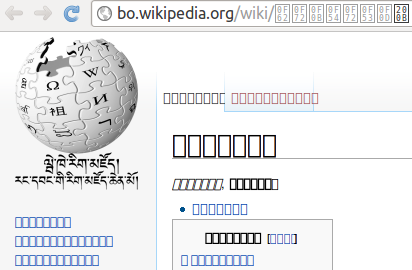Is there a name to describe the situation where a particular character is shown on a computer screen in a particular font, but this font does not have a glyph for this particular character?
Usually, the result looks like this: □
A kind of empty rectangle. Sometimes it shows the code for that character within the rectangle.

How do yo call this phenomenon in Japanese?
If there is no name, is there a common term referring to this "missing glyph square" in Japanese?
(It is not 文字化け. 文字化け happens when character encoding meta-information is lost. It is not the problem here. Using a better font solves this phenomenon, but does not solve 文字化け. Selecting a character encoding solves 文字化け, but does not solve this phenomenon.)
